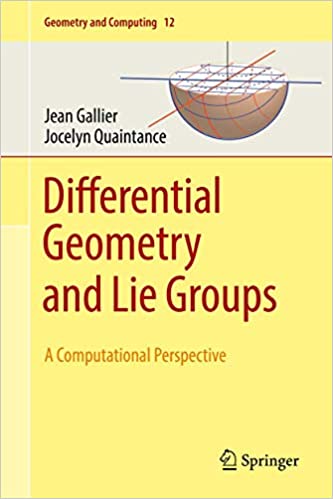Jean Gallier, "Differential Geometry and Lie Groups: A Computational Perspective"
English | ISBN: 3030460398 | 2020 | 749 pages | EPUB, PDF | 55 MB + 18 MB
English | ISBN: 3030460398 | 2020 | 749 pages | EPUB, PDF | 55 MB + 18 MB
This textbook offers an introduction to differential geometry designed for readers interested in modern geometry processing. Working from basic undergraduate prerequisites, the authors develop manifold theory and Lie groups from scratch; fundamental topics in Riemannian geometry follow, culminating in the theory that underpins manifold optimization techniques. Students and professionals working in computer vision, robotics, and machine learning will appreciate this pathway into the mathematical concepts behind many modern applications.
Starting with the matrix exponential, the text begins with an introduction to Lie groups and group actions. Manifolds, tangent spaces, and cotangent spaces follow; a chapter on the construction of manifolds from gluing data is particularly relevant to the reconstruction of surfaces from 3D meshes. Vector fields and basic point-set topology bridge into the second part of the book, which focuses on Riemannian geometry.
Chapters on Riemannian manifolds encompass Riemannian metrics, geodesics, and curvature. Topics that follow include submersions, curvature on Lie groups, and the Log-Euclidean framework. The final chapter highlights naturally reductive homogeneous manifolds and symmetric spaces, revealing the machinery needed to generalize important optimization techniques to Riemannian manifolds. Exercises are included throughout, along with optional sections that delve into more theoretical topics.
Differential Geometry and Lie Groups: A Computational Perspective offers a uniquely accessible perspective on differential geometry for those interested in the theory behind modern computing applications. Equally suited to classroom use or independent study, the text will appeal to students and professionals alike; only a background in calculus and linear algebra is assumed. Readers looking to continue on to more advanced topics will appreciate the authors’ companion volume Differential Geometry and Lie Groups: A Second Course.



